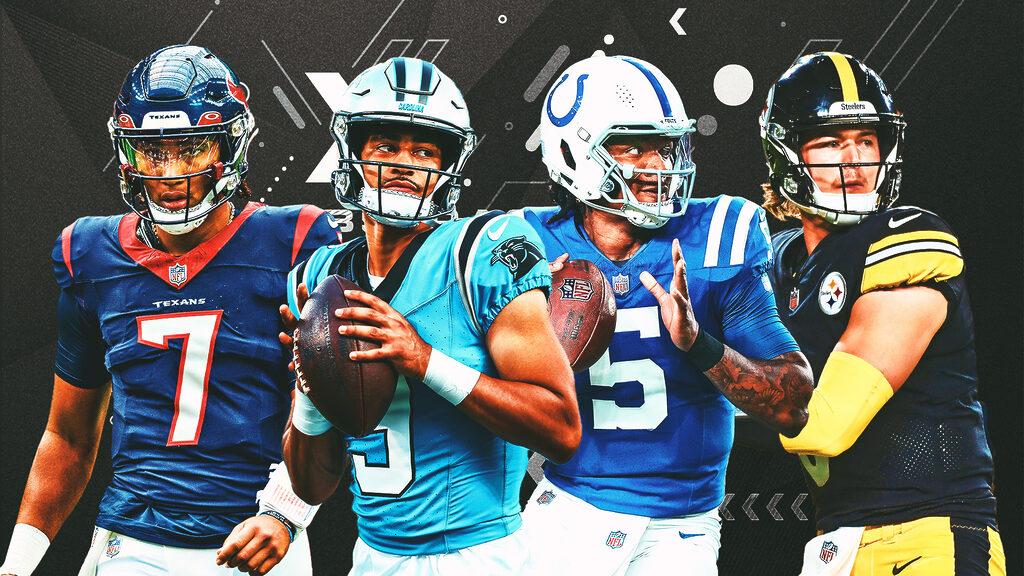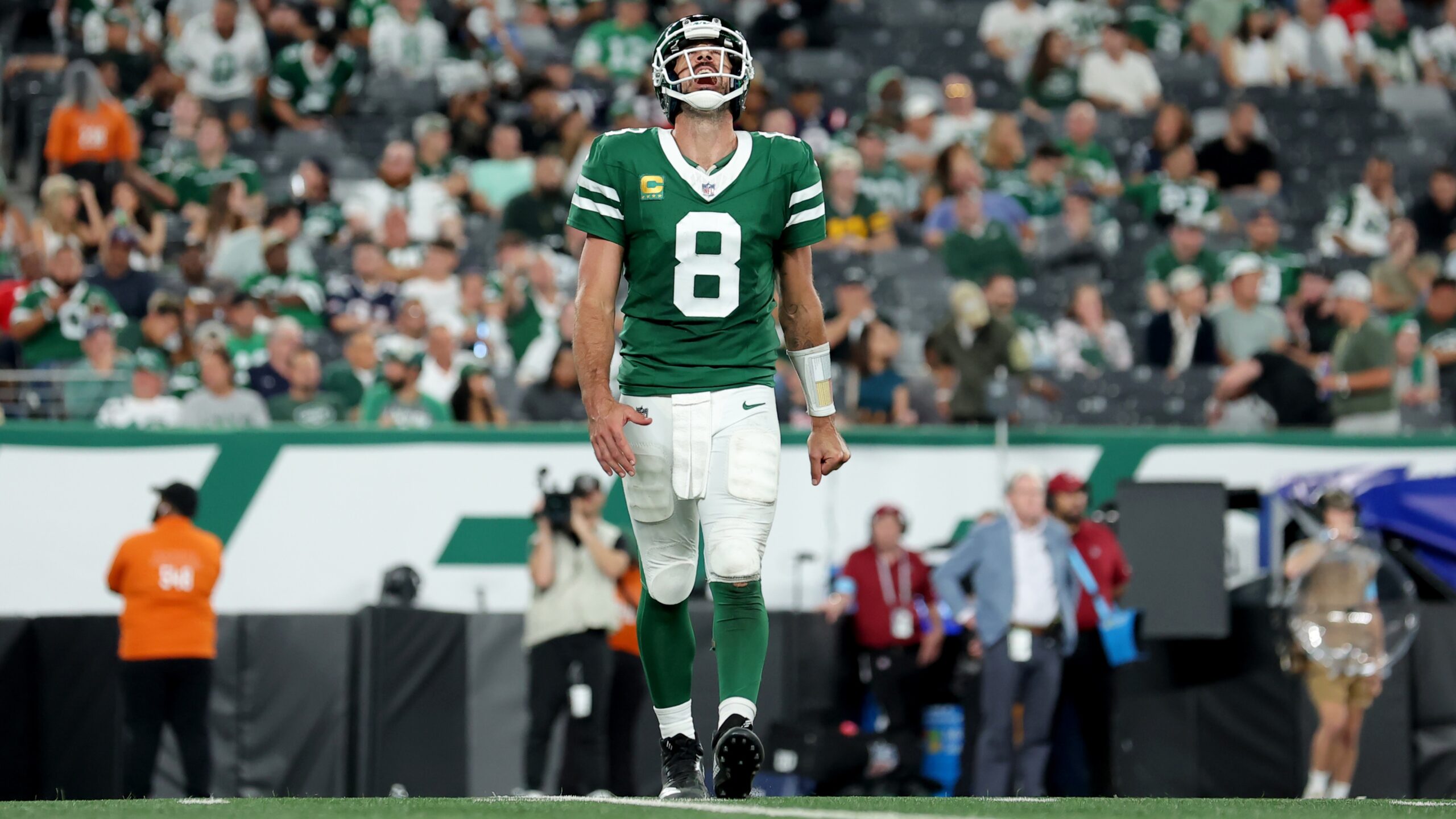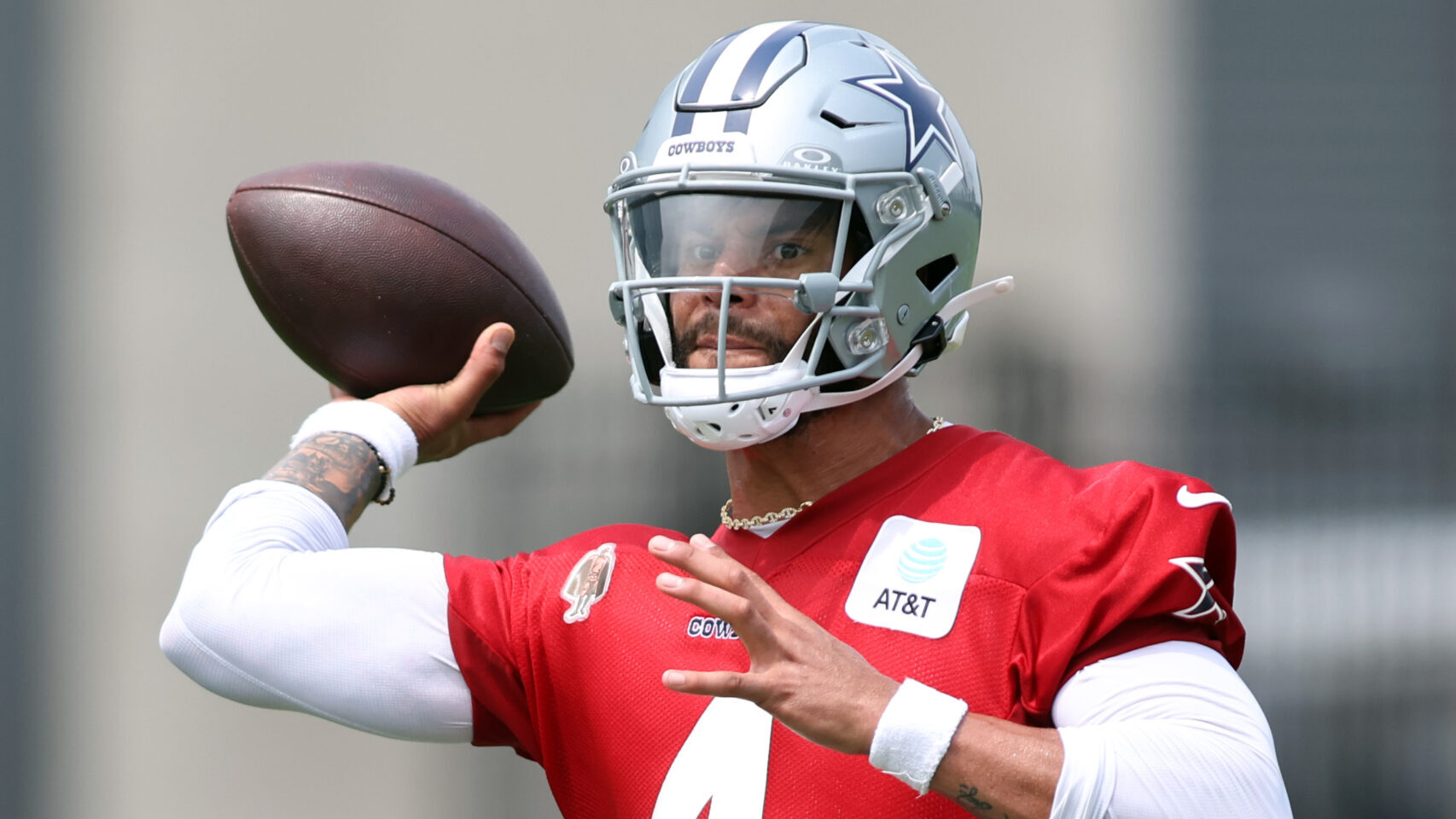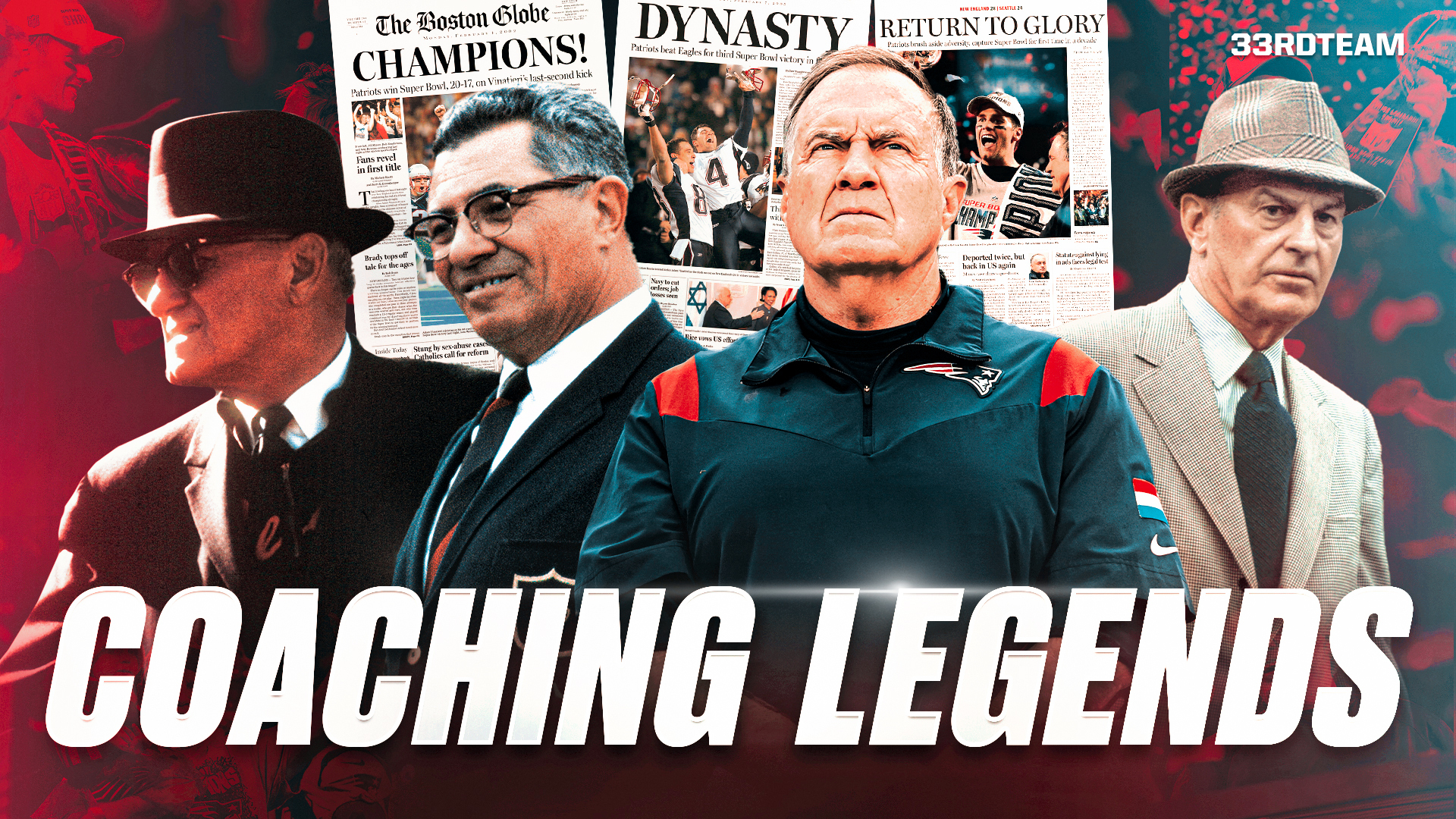Analysis
9/22/23
8 min read
NFL Myth Busting: Do Teams Need to Run More With Young QBs?

THE MYTH: If your starting quarterback is young or, perhaps, a backup forced to play because of injuries, logic says you run the ball a higher percentage on first down to avoid subjecting him to undue stress. Logic also says that when you do decide to throw the ball — regardless of the down — those passes should be short and quick, again, to reduce the pressure on someone with a limited skill set.
This premise is deeply entrenched among NFL coaches, almost universally accepted — and wrong.
THE REALITY: There are two reasons that thinking misses. First, the No. 1 statistic in any given game that correlates to winning vs. losing is yards per pass attempt (YPPA) — not turnovers, not time of possession. History tells us that the team with the higher YPPA wins about 80 percent of the time. The second is that the team ahead at halftime wins three-quarters of the time. For all the attention given to quarterbacks who lead the league in fourth-quarter comebacks, that’s not that correlative. Basically, you’ll still lose three of every four games if you’re not ahead at the half.
Now, let’s tie the two reasons together and see how they affect young quarterbacks.
According to conventional wisdom, if you have a young quarterback such as, say, rookies Bryce Young or C.J. Stroud, you protect him early and often by running on first down. However, you’re actually doing him a disservice, and here’s why: Passing on first-and-10 is generally effective, especially with a young quarterback, because defenses can’t play pass-first; they must play the run or the pass. So they line up neutrally. But coaches don’t seem to get that. What drives their play calling is a desire to avoid putting a young quarterback in third-and-long, but what they’re doing actually increases the chances of putting him there.
That’s not the quarterback’s fault. People don’t understand how many games are decided on Tuesdays when coaches finalize game plans. That’s when they attempt to protect their inexperienced quarterback with a conservative approach that features first-down runs and short, quick passes. The myth says that makes sense. But you’re virtually guaranteeing few first-half points and no first-half lead.
Look at the numbers through the first two weeks of this season. A good, not great, offense is historically more than seven yards per attempt for the year, and the really good ones are eight or above. Now look where Young is in the first half: 5.3 points. Stroud is better at 6.26, but not where he should be.
Nevertheless, it could be worse. Atlanta Falcons QB Desmond Ridder is at 5.0, Green Bay Packers QB Jordan Love is at 5.17 and Pittsburgh Steelers QB Kenny Pickett is tied with Young at 5.3 … and that’s a huge problem. It means that Ridder, Love, Young and Pickett are nearly two yards per attempt behind a good offense and that Stroud is nearly two yards short of a really good one.
I’ll be honest: If you’re in the fives, forget it. You’re dead meat when it comes to scoring a lot of points in the first half. And if you’re in the sixes, you’re still in trouble … although you’re not stuck in the caboose.
Fans want to criticize struggling young quarterbacks, with critics already questioning the choice of Young as the first-overall draft choice. But it’s not necessarily the quarterback’s performance that’s the issue — it could be the plays he’s been told to call.
Now, fast-forward to the average number of first-half points. Four of the nine young quarterbacks we’re studying start for teams averaging fewer than 10 points by halftime. It doesn’t take a genius to know you seldom lead doing that. With Young, it’s five points. With Stroud, it’s eight. Among the nine quarterbacks surveyed, Young is last, and Stroud is tied with Ridder and Chicago Bears QB Justin Fields as runners-up.
The average of our nine quarterbacks is 11.25 first-half points, with Indianapolis Colts QB Anthony Richardson the outlier at 17.5 and Washington Commanders QB Sam Howell second at 12.
There’s one more figure I’d like to dissect before I thoroughly confuse you: first-down runs in the first half. Specifically, I want to look at the average number of yards gained and the percentage of runs called. Of the nine teams with our young quarterbacks, five called runs more than 50 percent of the time and five quarterbacked offenses that gained fewer than four yards on average. Successful offenses with veteran quarterbacks run the ball 30-40 percent on first downs, whereas offenses with young quarterbacks run it 50-60 percent of the time.
Look at Patrick Mahomes, Ryan Tannehill, Josh Allen, Kirk Cousins and Matthew Stafford, for instance. Through two games this season, they called first-half runs on first down an average of 43 percent of the time, with Mahomes the lowest at 30.43 percent. That contrasts dramatically with Pickett, Howell and Ridder, all of whom called first-half runs on first down 60 percent (or higher) of the time.
That tells you that Mahomes is throwing the ball 70 percent of the time on first downs, and Pickett, Howell and Ridder are not. Instead, they’re in charge of offenses relying heavily on first-down runs where, often, they’re left in downs and distances where opponents aren’t compelled to play as carefully.
The reason: Defenses know what’s coming, and it’s usually a short pass.
Coaches make these decisions across the board, and it reduces the chances for a young quarterback to succeed. If you’re running the ball two-thirds of the time on first downs, defenses aren’t stupid. They know it. So your chances of success decrease drastically. Now, you’re passing on second and third, and opponents play accordingly or blitz a young quarterback who might have trouble reading what he’s seeing.
Bottom line: Conventional wisdom says you’re helping the quarterback with first-down runs, but you’re not. Those runs reduce his chances of success on succeeding downs, shrink the number of first-half points you’re likely to score and kill your yards per pass attempt, which correlates to points.
Now, I know what you’re saying: Great, but that’s based on two games this year. If you look at statistics compiled over the past three seasons, teams that led at the half won 73.6 percent of the time. And if you go back five, 10, 20 years, you’ll see that holds up. That’s precisely the number thus far this season.
I remember once when Bill Walsh was asked about the keys to his offense, and he said the first thing you should be doing is throwing on first down. When asked why, he said it was because defensive coordinators are trained to stop the run to put you in second-and-long situations. Furthermore, he said those same coordinators have a hard time breaking from tradition, even if history says you’re more likely to pass on first down. I know that was a long time ago, but the idea still holds.
Let’s be honest: Quarterbacks aren’t successful because they average 6.5 yards per attempt instead of 5.5 or complete 65 percent of their passes and not 55. They’re successful because their offenses, especially in the first half, put points on the board. That’s not to say there aren’t exceptions. There are. There are no absolutes in football, but there are probabilities that increase or decrease your chances of success.
So what does all this mean?
It means that if I were a young quarterback, I’d like my coach to call plays to give me the best chance of succeeding, which means I’d want him to trust me enough to push the ball downfield. That doesn’t mean a vertical game where all we do is take deep shots, but it does mean calling plays with a great chance of runs after catch, maybe crossing patterns or middle screens, or a 20-yard crossing pattern. Don’t just throw the bomb or post and let a defense shrink the field on your young quarterback.
Do what you must to get him to the half on top, and not just for his benefit.
But for your team’s.
Joe Banner is a former front office executive for the Philadelphia Eagles and Cleveland Browns. He was a part of an Eagles franchise that made a Super Bowl and played in four NFC Championship Games. Follow him on Twitter at @JoeBanner13









